Narcissus tazetta ‘Grand Primo’ are superstars for the garden! There are a few bulbs that just stand out from the rest. The Narcissus ‘Grand Primo’ is one of those bulbs. Gardeners and landscapers alike in the South have a bulb in the Grand Primo that can be their early spring go-to bulb. In his book Garden Bulbs for the South Scott Ogden says that “no finer flowering bulbs are available for Southerners than the old narcissi” known as ‘Grand Primo’.
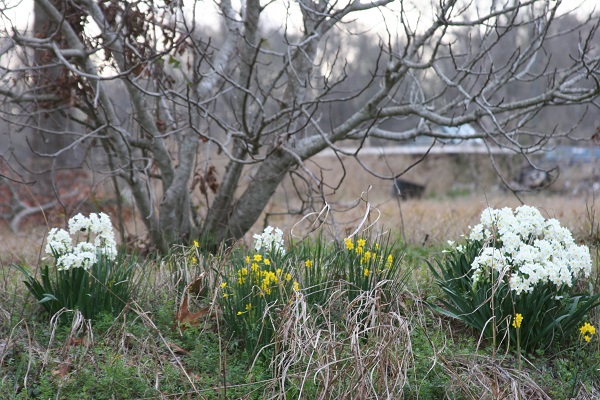
Information on the Narcissus ‘Grand Primo’
Be sure to visit our website to get more information about the Narcissus ‘Grand Primo’ here Heirloom ‘Grand Primo’.
- What makes the Narcissus ‘Grand Primo’ special?
- How many blooms will I get from each bulb?
- When will it bloom?
- How is a Narcissus tazetta different from just a Narcissus?
- What else should I plant with my Grand Primo bulbs?
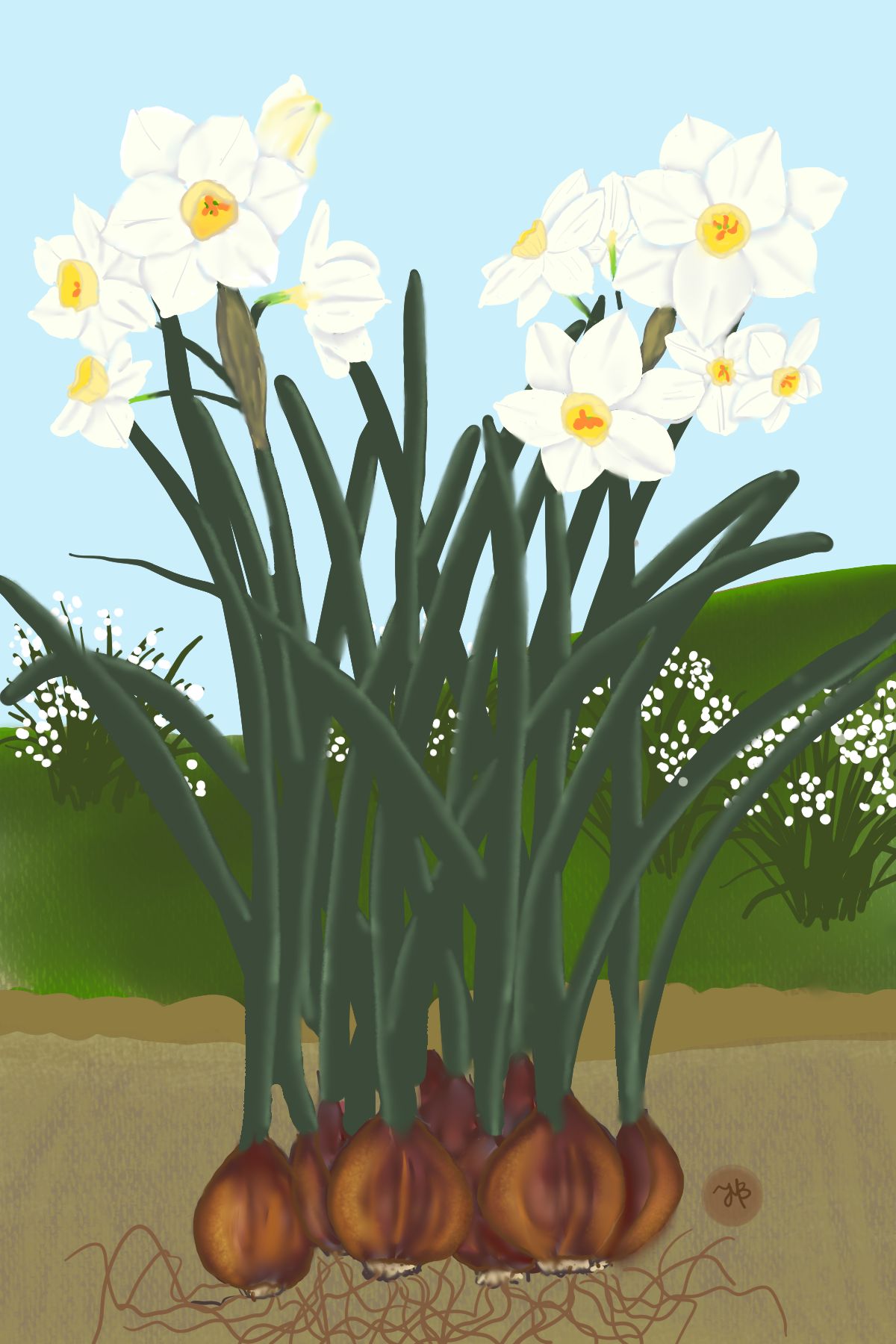
What makes the Narcissus ‘Grand Primo’ so special?
The Narcissus tazetta ‘Grand Primo’ is a superstar from the Gulf Coast to the northern parts of the South, to California, and other warm climates. Vigorous, reliable, perennial all come to mind. Landscapers enjoy the bulb for its massive color impact, and home gardeners enjoy it for the length of bloom time. This bulb has the ability to thrive almost anywhere in the South, and it seldom needs to be divided (only if you want to share bulbs with others or move them around). Its landscape qualities and overall ease of use for home gardeners have made it a favorite.
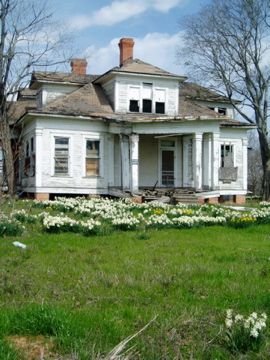
The Grand Primo has a light sweet scent that will make you want to plant it close to the house. Neighbors may think that you have different bulbs planted because as the blooms age they actually change color. Newly opened blooms will have cream color petals with light yellow cups, but those colors fade as the flower ages, and many people often mistake the Grand Primo for a late-flowering paperwhite.

The Grand Primo has several imposters claiming to be “just like it.” The problems are that one is shorter, another has different colors, one’s scent is non existent, another flowers too early, and others don’t do well across such a wide range in the Southern United States (think Narcissus tazetta “Avalanche”). These other bulbs are still good, but not the amazing, reliably blooming, well adapted “Grand Primo.”
How many blooms will I get from each bulb?
Once established each bulb will send up two or three flower stalks and then each stalk will produce a plethora of smaller flowers. Many Narcissus bulbs will produce a single stem with a single bloom, but that is not the case with the Grand Primo, as the larger bulbs send up these stalks in succession. This succession adds to the length of time the flower is in bloom. It also makes the area look “fuller” sooner. The older and more-established the bulb, generally the more flowers it will produce. It does not take the Grand Primo long to multiply and naturalize an area. This means more blooms every spring.

When will it bloom?
The Grand Primo blooms in early spring. It usually resists blooming until February or early March in warmer growing zones. This bloom time helps protect it against the danger of the earlier freezes of December and January. In colder growing zones, it may not bloom until late March; however, a warm winter may make it bloom a little earlier. There is no need to worry though if it does bloom early and then there is a frost – it will generally recover and still bloom. If it experiences a severe freeze, just allow the foliage to go ahead and die back naturally taking in all the nutrients it can from the sun. The bulb is perfectly fine in the ground.
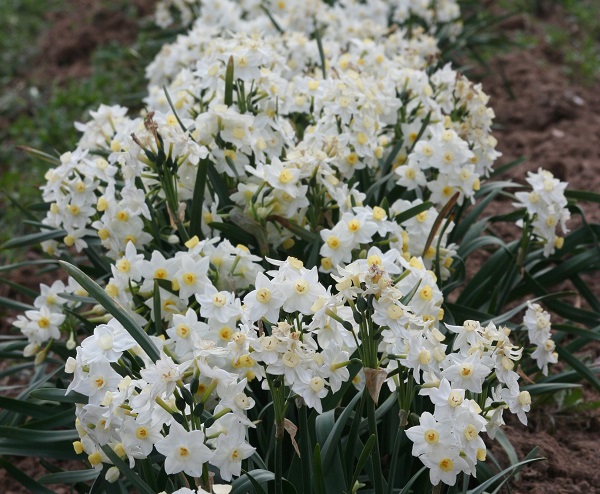
If you have had perennial bulbs, you have probably noticed that no two years are exactly the same as to when the bulbs bloom. The Grand Primo should normally bloom in late February or early March. This year, 2022, was a warm early winter in east Texas so our Grand Primo bulbs actually started blooming in January. Let’s take a minute and discuss some of the factors that affect when a perennial bulb will bloom.
- Light—This is probably the single biggest factor as to when and if a bulb will bloom. The light gives the bulbs nourishment and energy. Bulbs need a lot of energy to produce their blooms. We tell you whether a bulb needs winter sun, like the Narcissus and red spider lilies, or summer sun, like the crinum and rain lilies. If the bulbs don’t get enough sun, they might produce foliage but no bloom.
- Temperature—Some bulbs, especially tulips, need certain temperatures in order to bloom. The Southern Bulb Company focuses on perennial bulbs that do well in hot, humid climates. Even though the temperatures may be uncomfortable for us, our bulbs do well being planted any time of year they are available except in a hard freeze.
- Water—Sufficient water is necessary not only for growth but also for blooming. Let’s use the red spider lily as an example. If there is a dry summer and then not enough rain in August/September, the spider lilies may barely bloom or not at all. In that case watch for the winter foliage. We have some at the office that didn’t bloom at all during the fall of 2022 due to the lack of rain, but their foliage in December showed us that not only were they healthy but had multiplied from the year before. Grand Primo generally DO NOT need supplemental water because they grow in the winter when there is more rain, and they days are shorter so the soil stays moist. This might seem obvious, but avoid areas of too much water, like swampy areas that are essentially puddles all winter long.
- Soil—The soil can affect the blooms. Most of our bulbs do well in any kind of soil. If it has too much clay, we recommend that you amend it for better drainage. Some bulbs do best in clay though like the Texas tulip. The Grand Primo bulb not only does well but thrives in all kinds of soil from sandy to clay.
- Age and Genetics—Some bulbs take longer to mature before they bloom. It takes the yellow spider lily longer to get established than the red spider lily. That said, bulbs are like children from the same family…each one matures in their own time even though they come from the same place. For example, you may plant 10 red spider lily bulbs the same year, but only 3 come up the first year. Always be on the lookout for the foliage. If the foliage grows, then your bulbs are healthy and getting adjusted. Once they start blooming, they will bloom for a lifetime.

How is a Narcissus tazetta different from just a Narcissus?
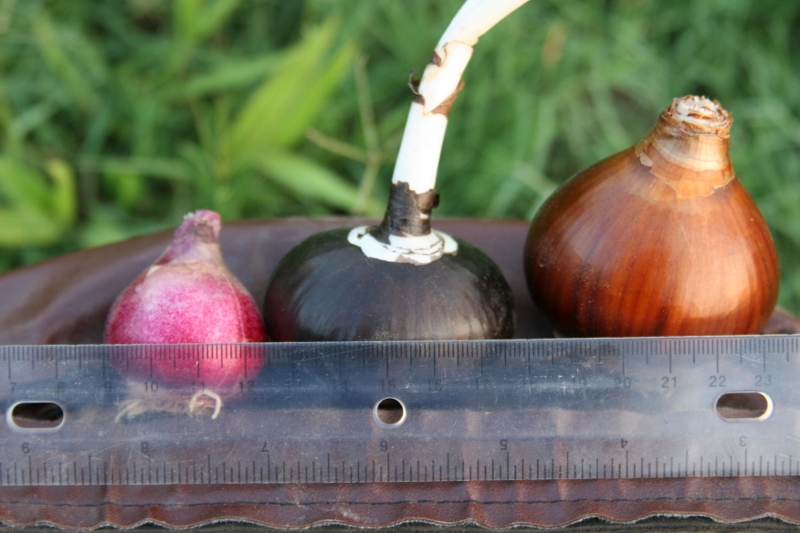
So you may notice that this one is called a Narcssisus tazetta. What makes a tazetta bulb different from a non-tazetta bulb? Great question! Tazetta flowers have smaller cups, but a LOT more of them. The outer petals can be white, yellow, or orange and the inner cup can be white, yellow, or orange, and there can be many combinations in between. Tazettas are generally larger and more robust than the smaller species flower bulbs often referred to as narcissus. The “tazetta” group is valued because most bulbs in this category are great perennials, and a gardener can choose selections that bloom in December, January, February, and March!

What else should I plant with my Grand Primo bulbs?
There are several other flowers that will bloom about the same time as the Grand Primo and provide a variety of color. The Grand Primo’s cream color complements most anything that you have in your garden. Be sure to check what works best for your zone and soil. Consider planting: tulips, crocus, pansies, grape hyacinth or other daffodils.
If I had to summarize everything about the Narcissus tazetta ‘Grand Primo’ I would simply say that you need to start by planting it in your garden. Once you enjoy the blooms, the vigour, the timing, the reliability, the fragrance, and more, you will figure out a way to make sure it play a prominent role in your design! Enjoy!
